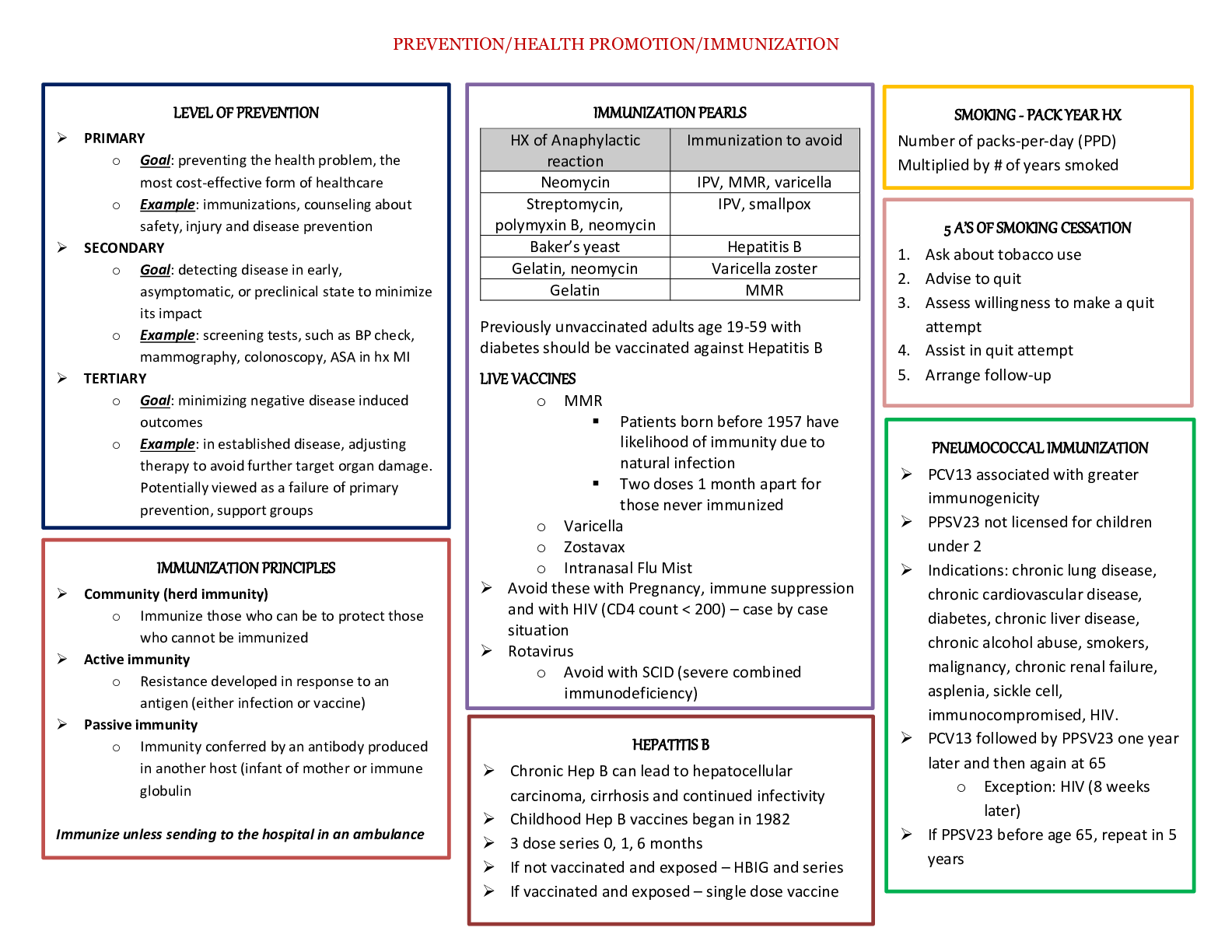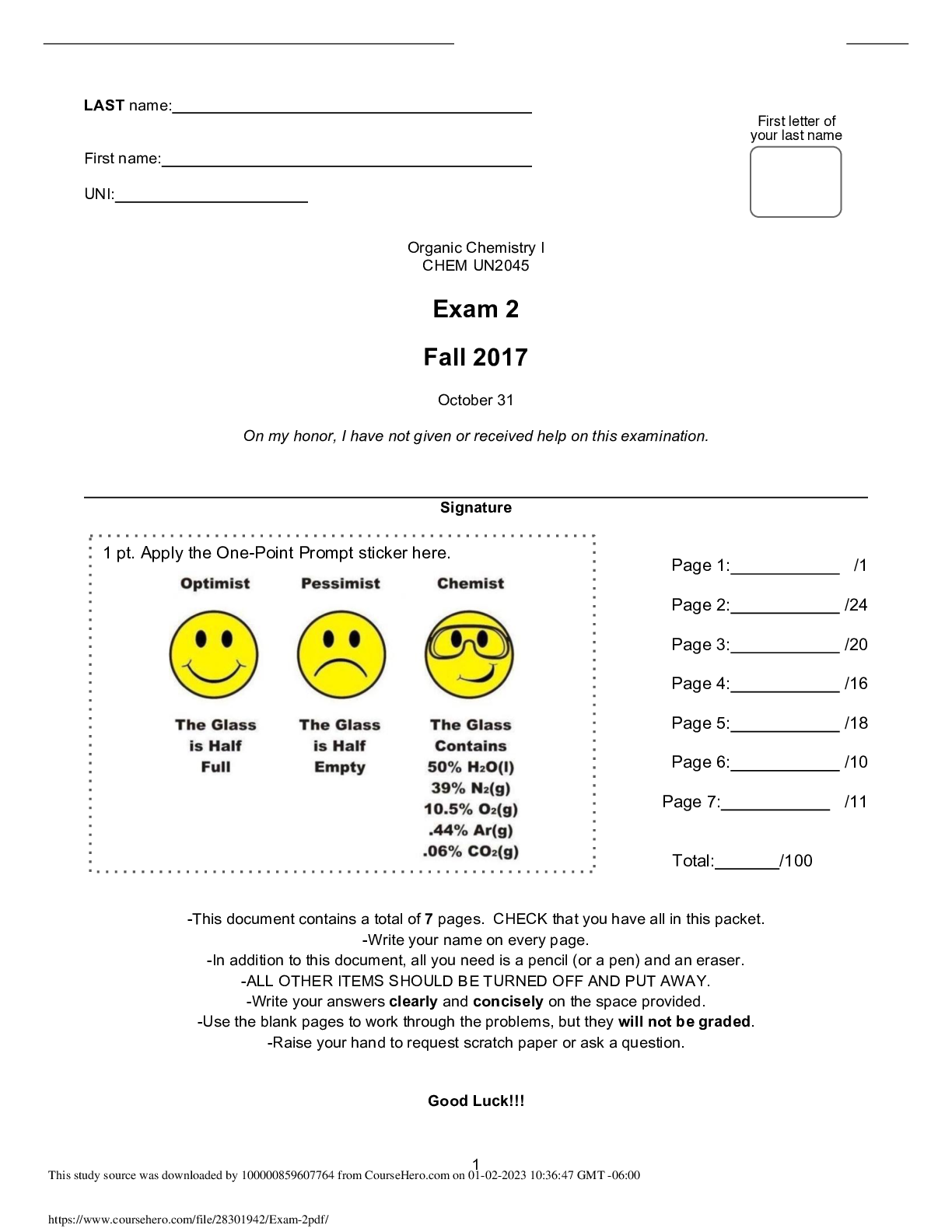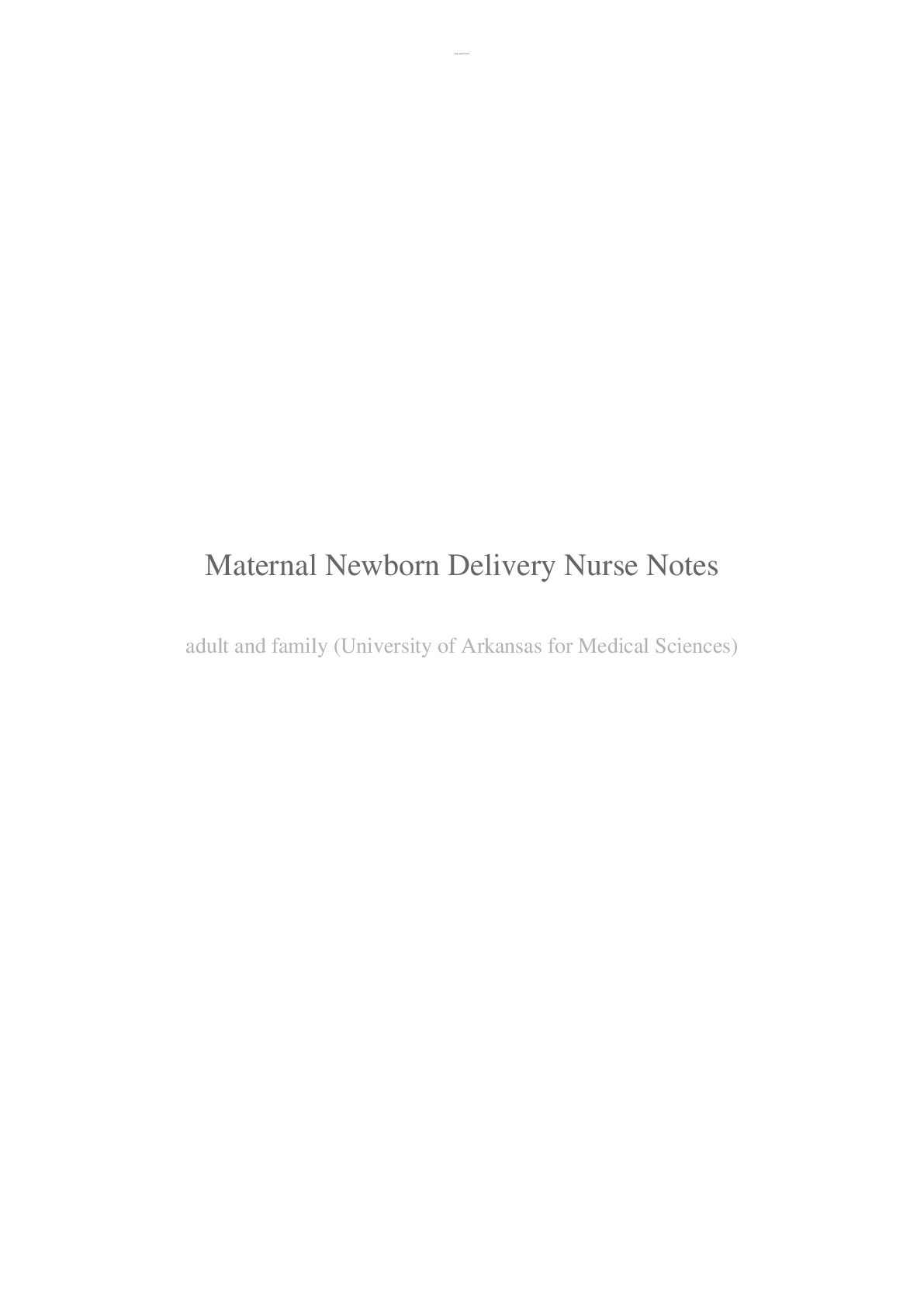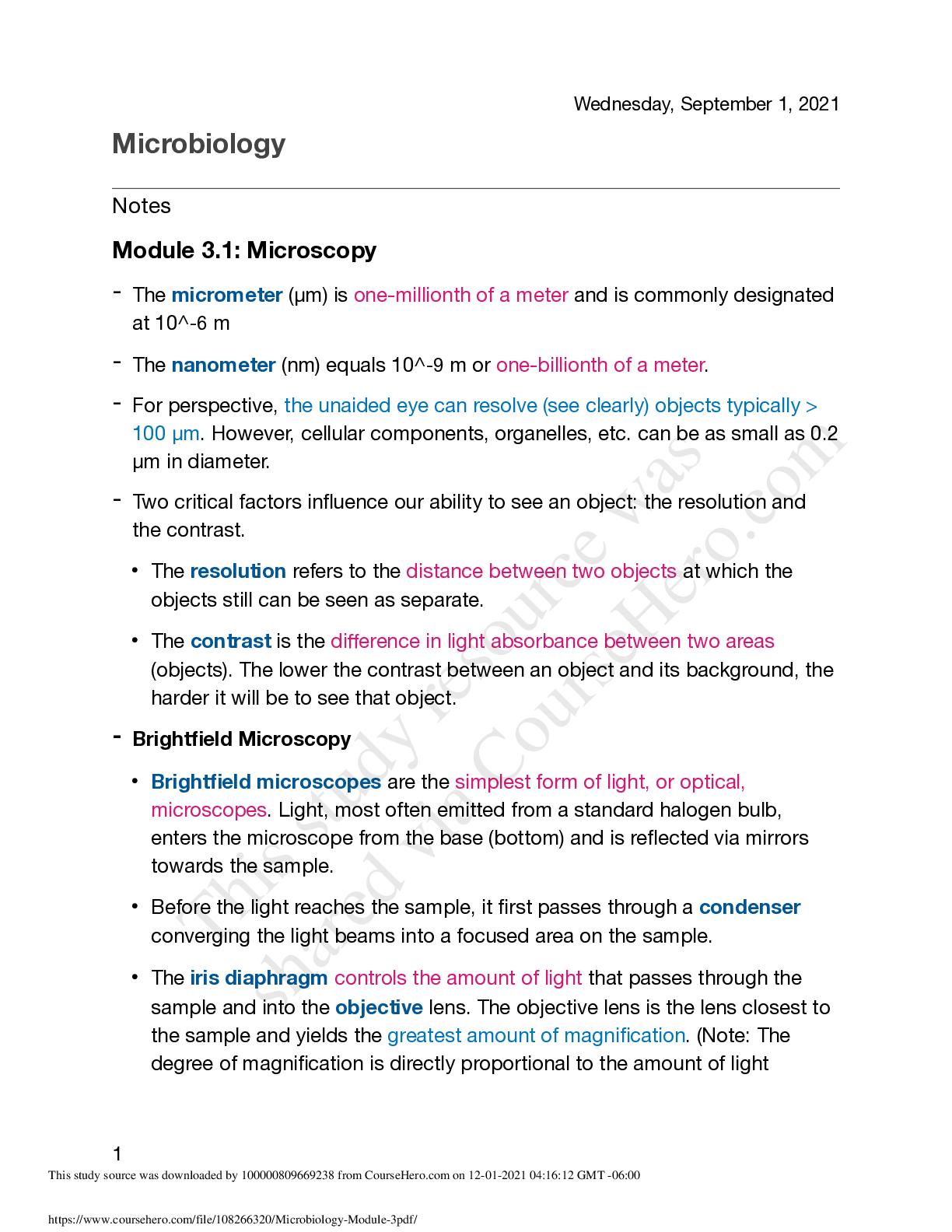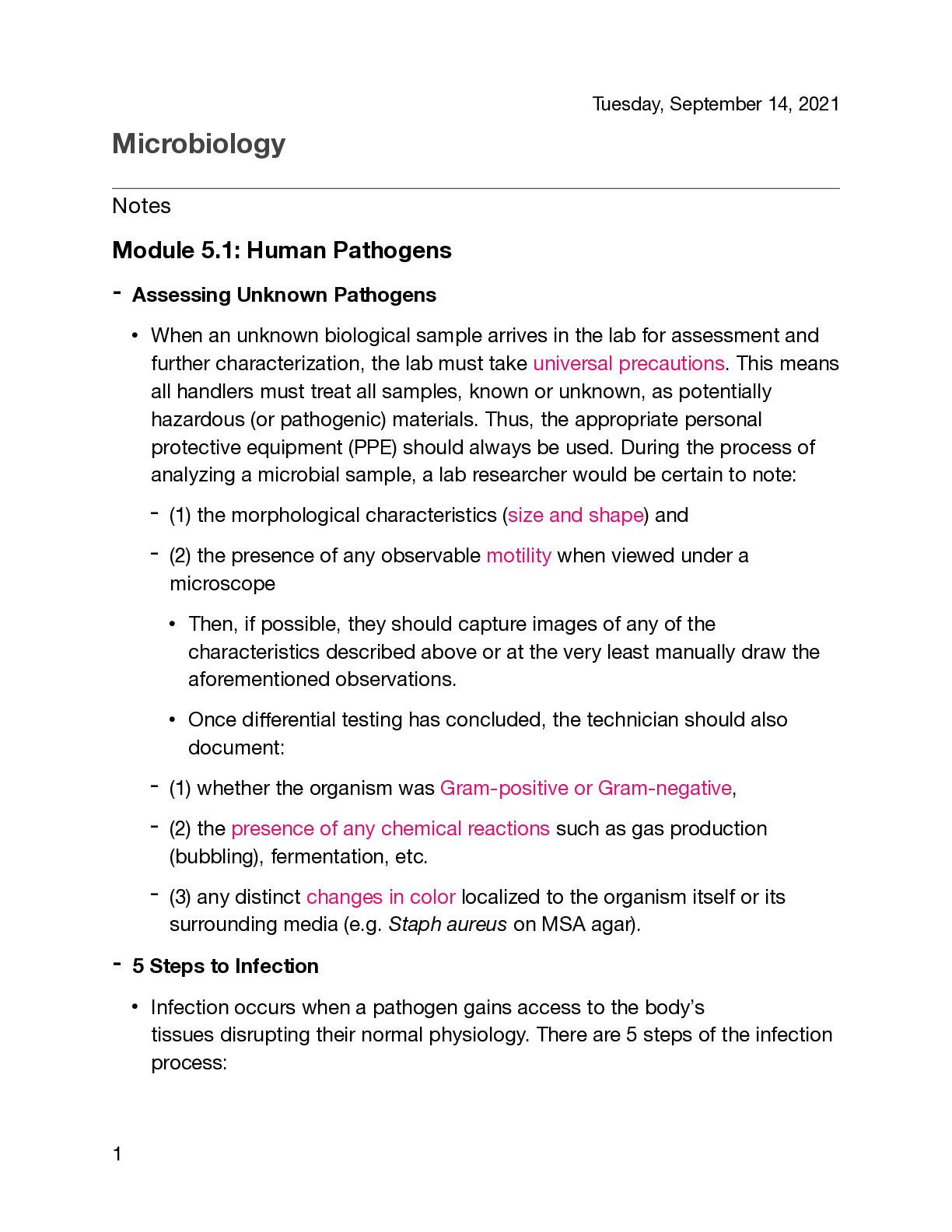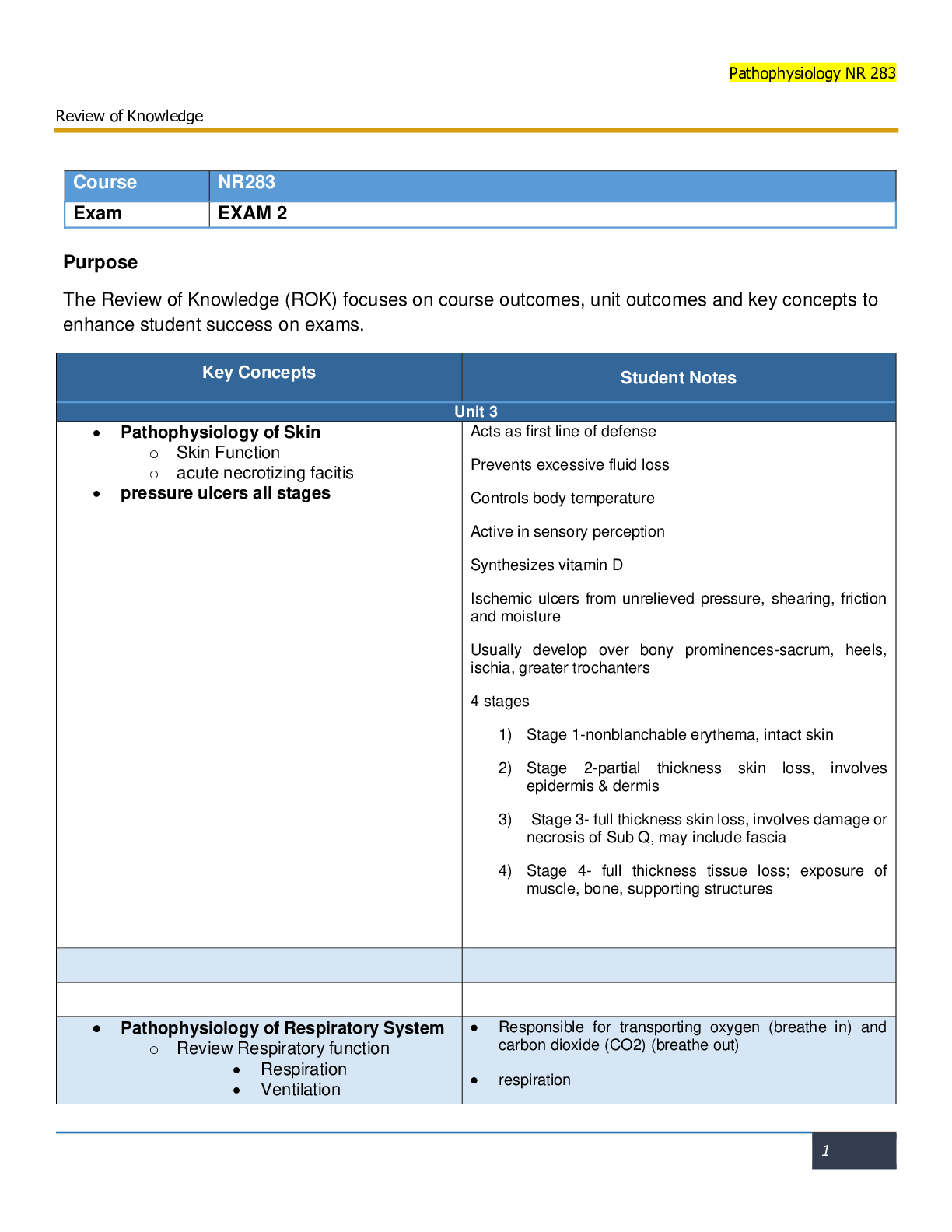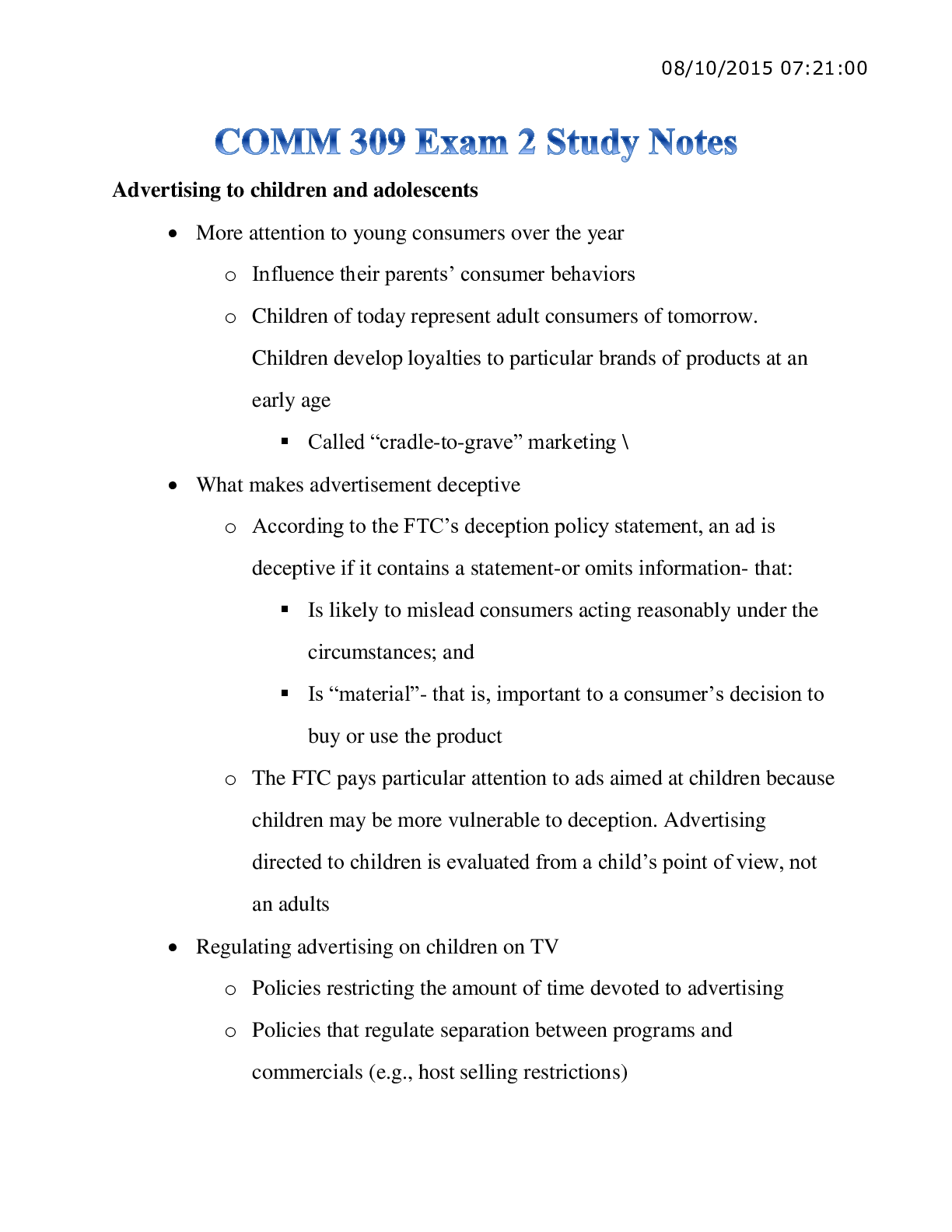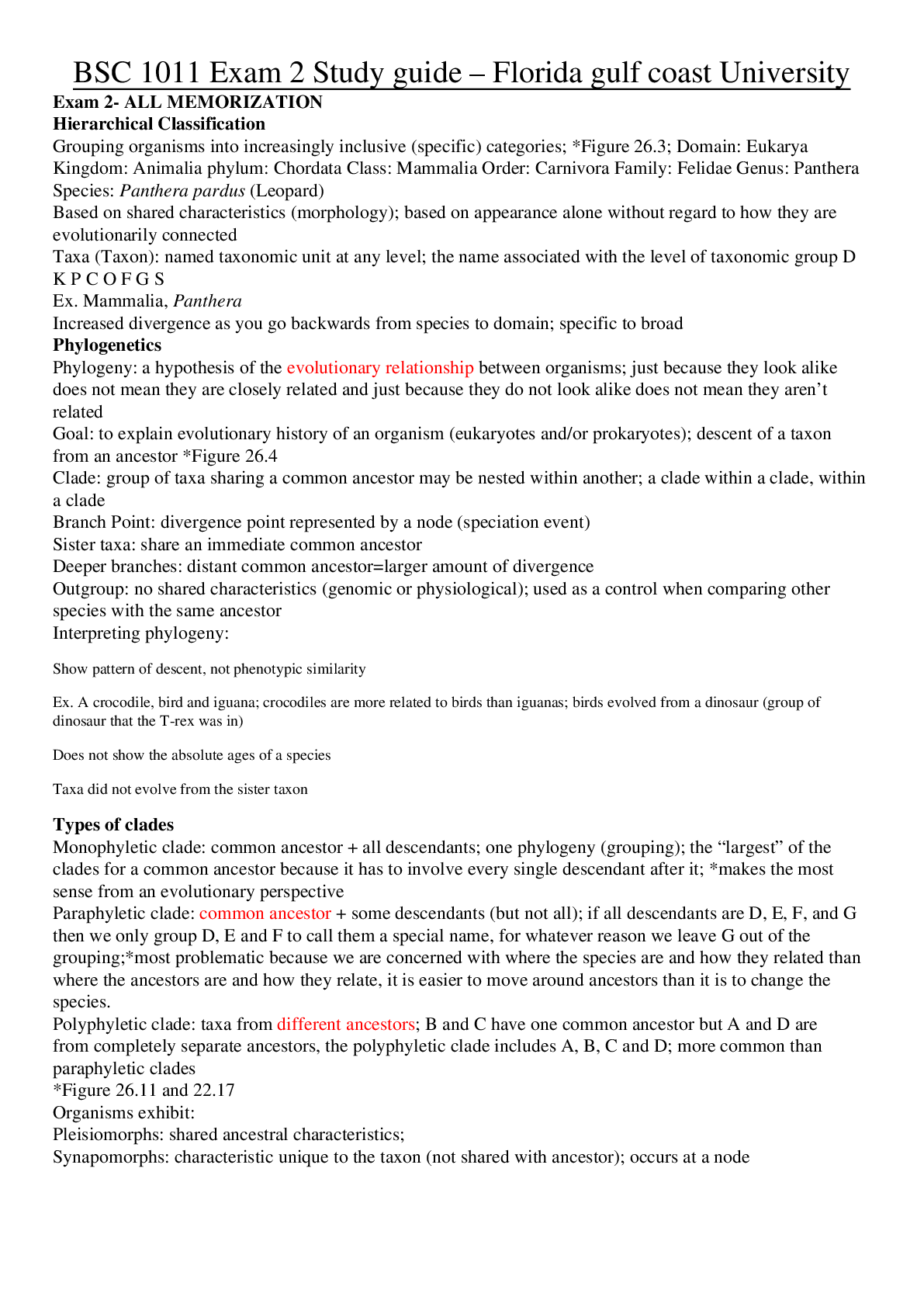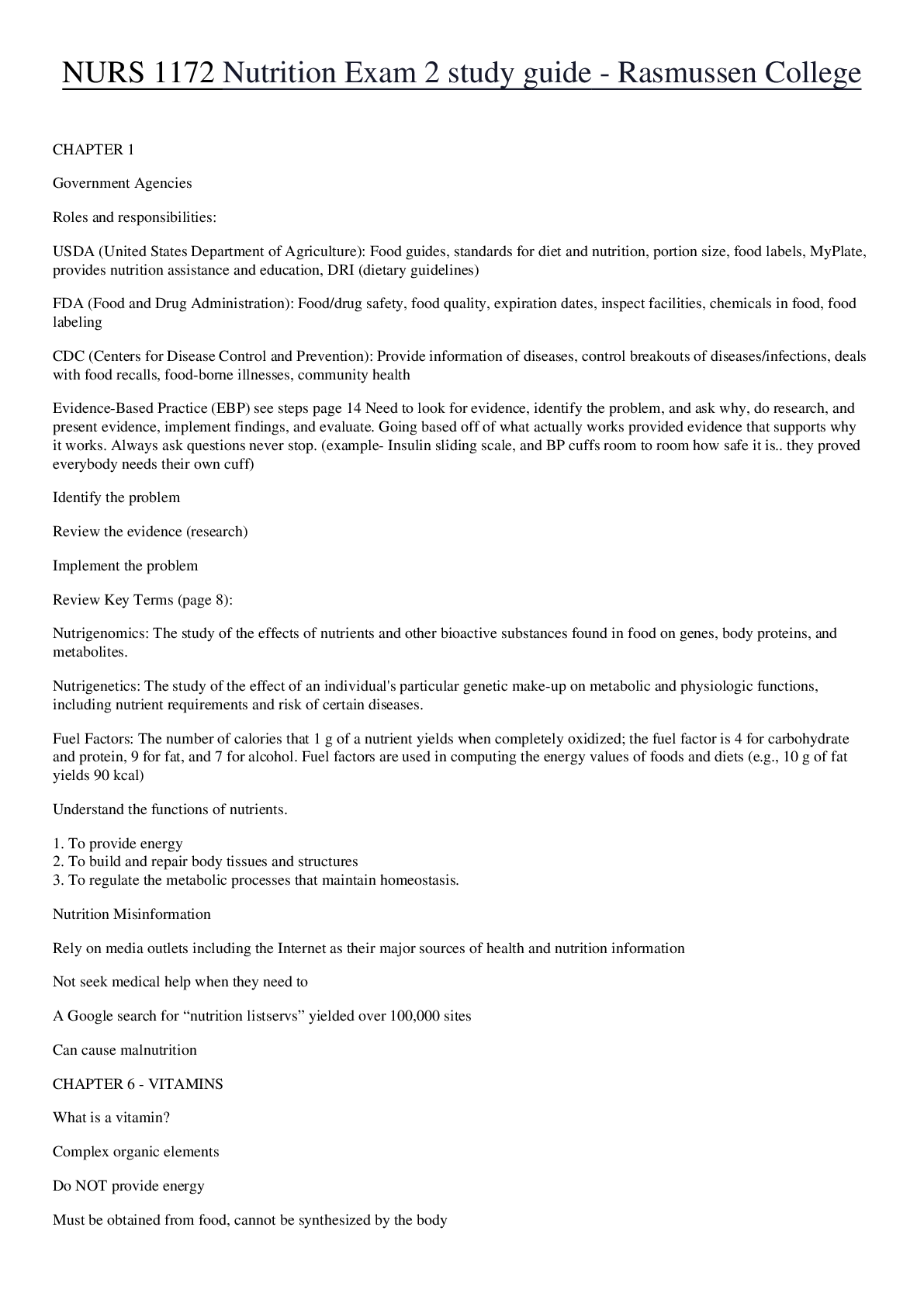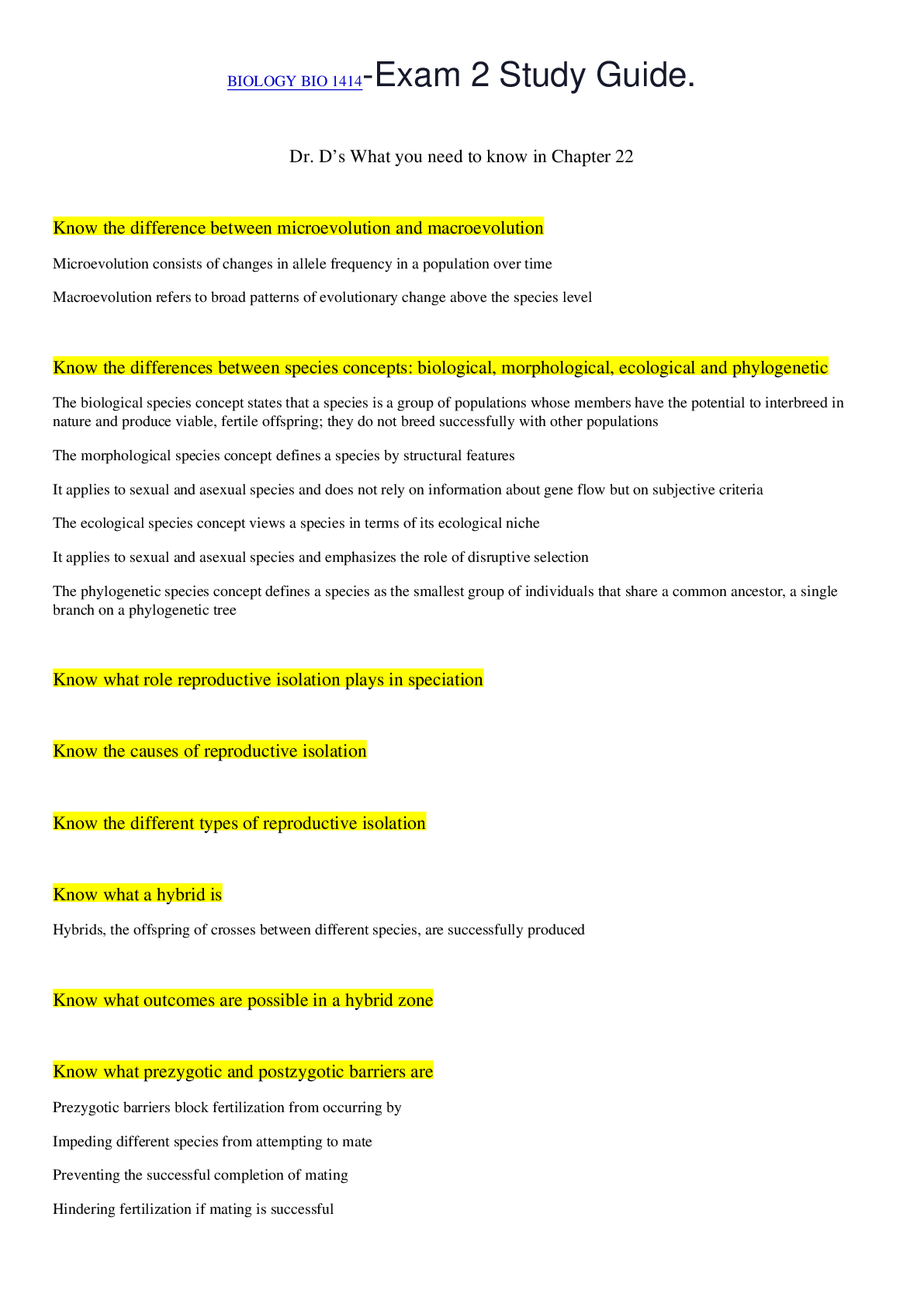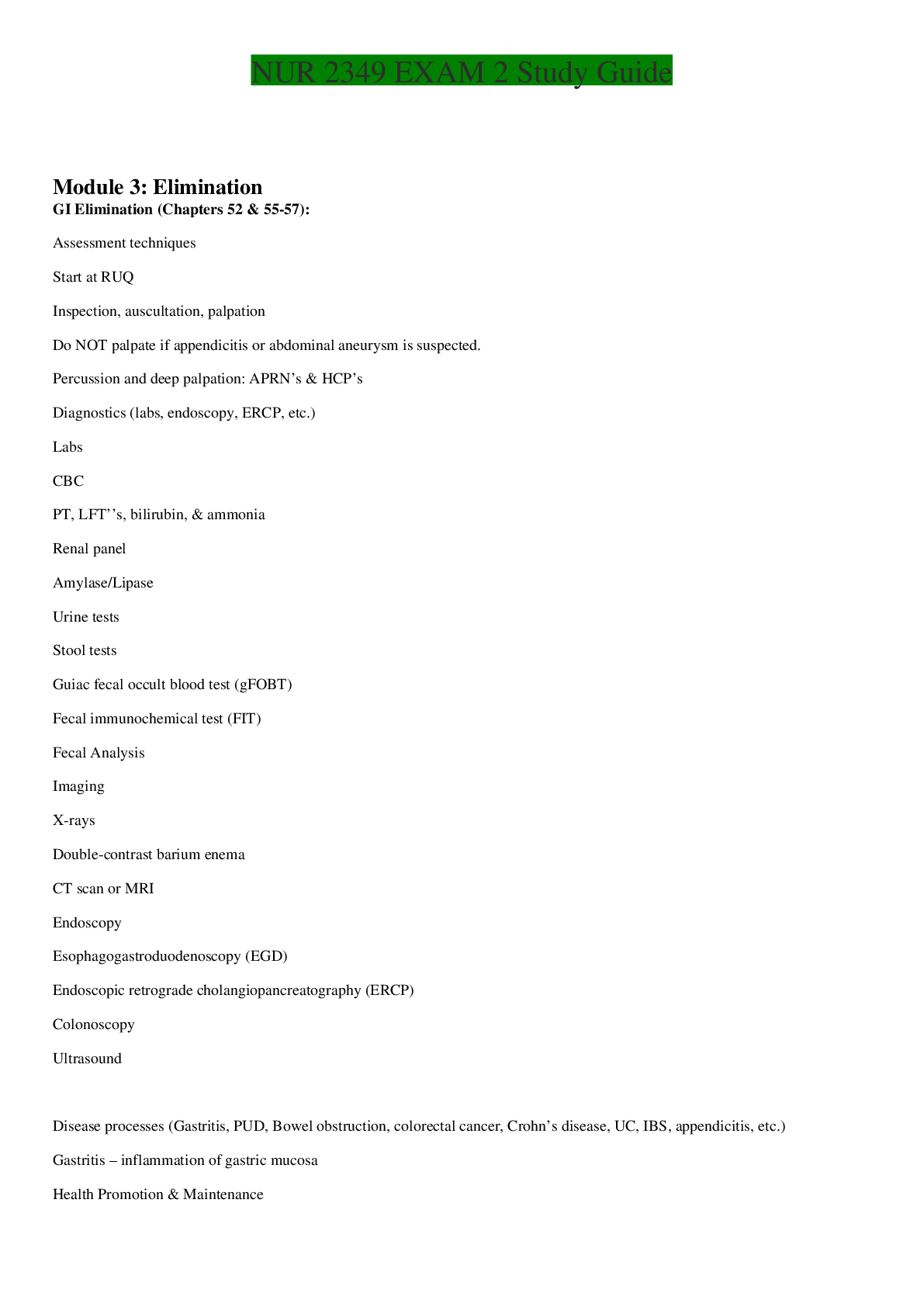*NURSING > STUDY GUIDE > NR 224 Exam 2 Study Guide (version 2)Revised. Latest 2020. A Graded (All)
NR 224 Exam 2 Study Guide (version 2)Revised. Latest 2020. A Graded
Document Content and Description Below
NR 224 Exam 2 Study Guide (version 2)Revised. Latest 2020. A Graded. CH40: Oxygenation 1. What is atelectasis and how do we prevent it? - A collapse of the alveoli that prevents normal exchange of ... oxygen and carbon dioxide. - 2. Respiratory wise, what are you looking for/at when observing a patient? Breathing patterns, chest wall movement and expansion, AP diameter? 3. What are the 6 P’s of dyspnea? - Pulmonary Bronchial Constriction - Possible Foreign Body - Pulmonary Embolus - Pneumothorax - Pump Failure - Pneumonia 4. If a patient has a pulse ox of 89% we do not immediately place on oxygen, what do we do instead? 5. What is orthopnea? - abnormal condition in which a patient uses multiple pillows when reclining to breathe easier or sits leaning forward with arms elevated. The number of pillows used usually helps to quantify the orthopnea (e.g., two- or three-pillow orthopnea) 6. If a client is experience orthopnea while laying flat in bed, what intervention can we recommend to improve their condition short term? - patient must sleep in a recliner chair to breathe easier. 7. What are the clinical signs and symptoms of hypoxia? - apprehension, restlessness, inability to concentrate, decreased level of consciousness, dizziness, and behavioral changes. 8. What is the first sign of hypoxia that you will observe in a patient? - blood pressure is elevated unless the condition is caused by shock. As the hypoxia worsens, the respiratory rate declines as a result of respiratory muscle fatigue. 9. What clinical manifestations of hypoxia are found late stages? - Cyanosis, blue discoloration of the skin and mucous membranes caused by the presence of desaturated hemoglobin in capillaries. 10. What do you do if you get an abnormal pulse ox reading that does not match your physical assessment? Retake it??? - Example: a SPO2 reading of 76% for a client who’s breathing is unlabored at a rate of 12 without evidence of hypoxia 11. Who should receive a flu vaccine? - Annual flu vaccines are recommended for all people 6 months and older; patients with chronic illnesses (heart, lung, kidney, or immunocompromised), infants, older adults, and pregnant women can get very sick; thus they should be immunized. Close contacts of infants under 6 months should also be immunized. Seasonal flu vaccine protects against influenza viruses that research indicates will be the most common during that year. [Show More]
Last updated: 1 year ago
Preview 1 out of 9 pages

Buy this document to get the full access instantly
Instant Download Access after purchase
Add to cartInstant download
We Accept:

Reviews( 0 )
$15.00
Document information
Connected school, study & course
About the document
Uploaded On
Nov 10, 2020
Number of pages
9
Written in
Additional information
This document has been written for:
Uploaded
Nov 10, 2020
Downloads
0
Views
42


